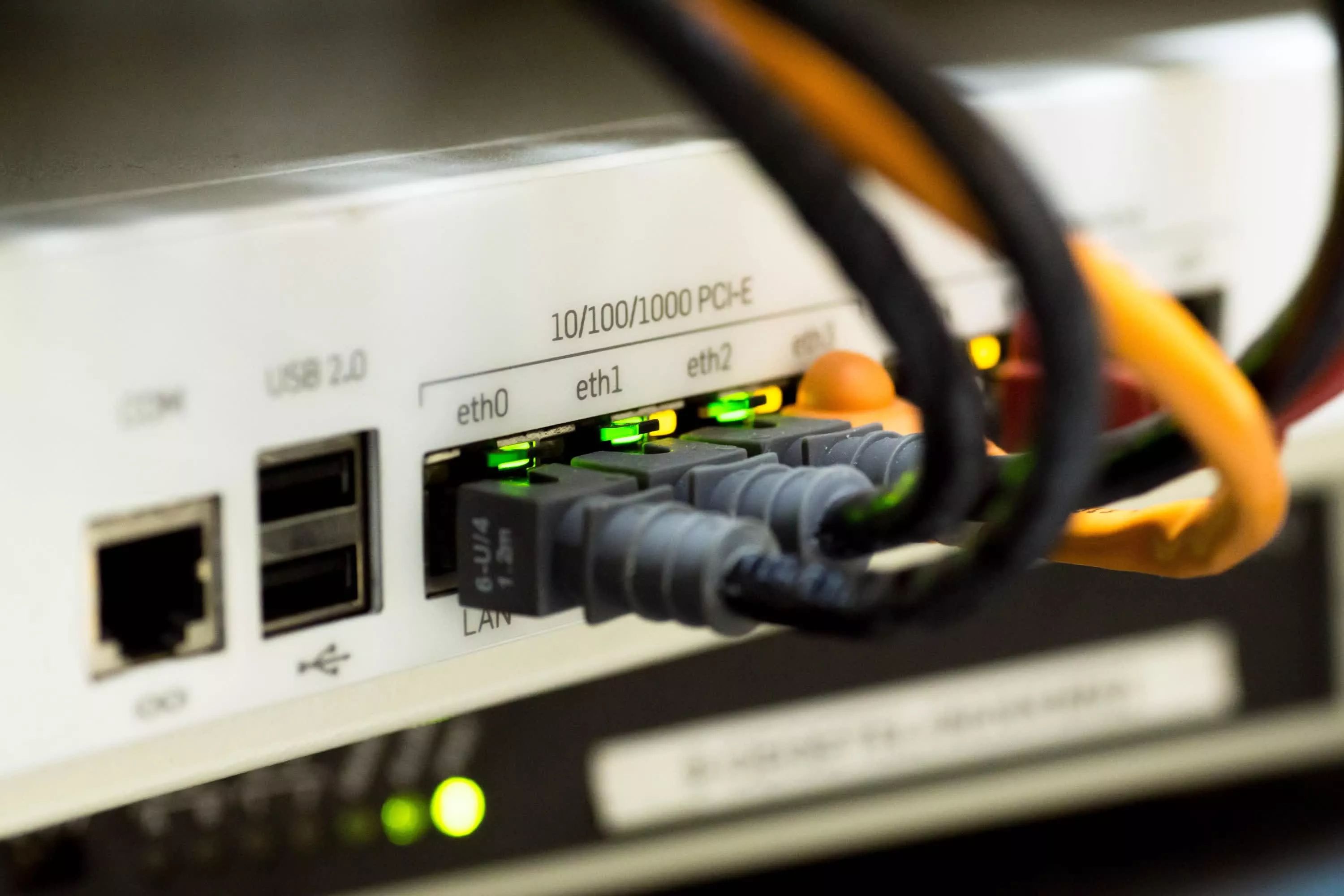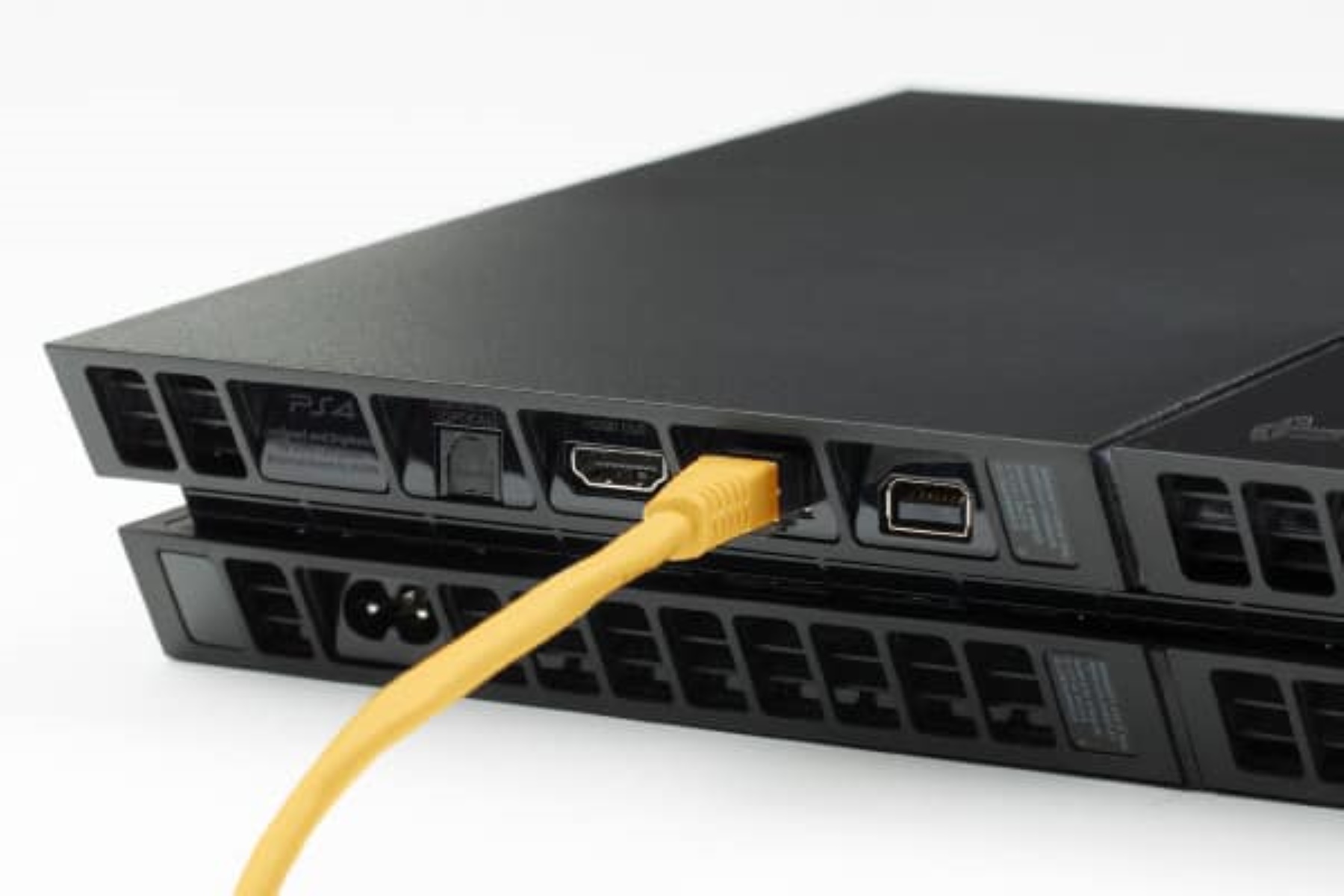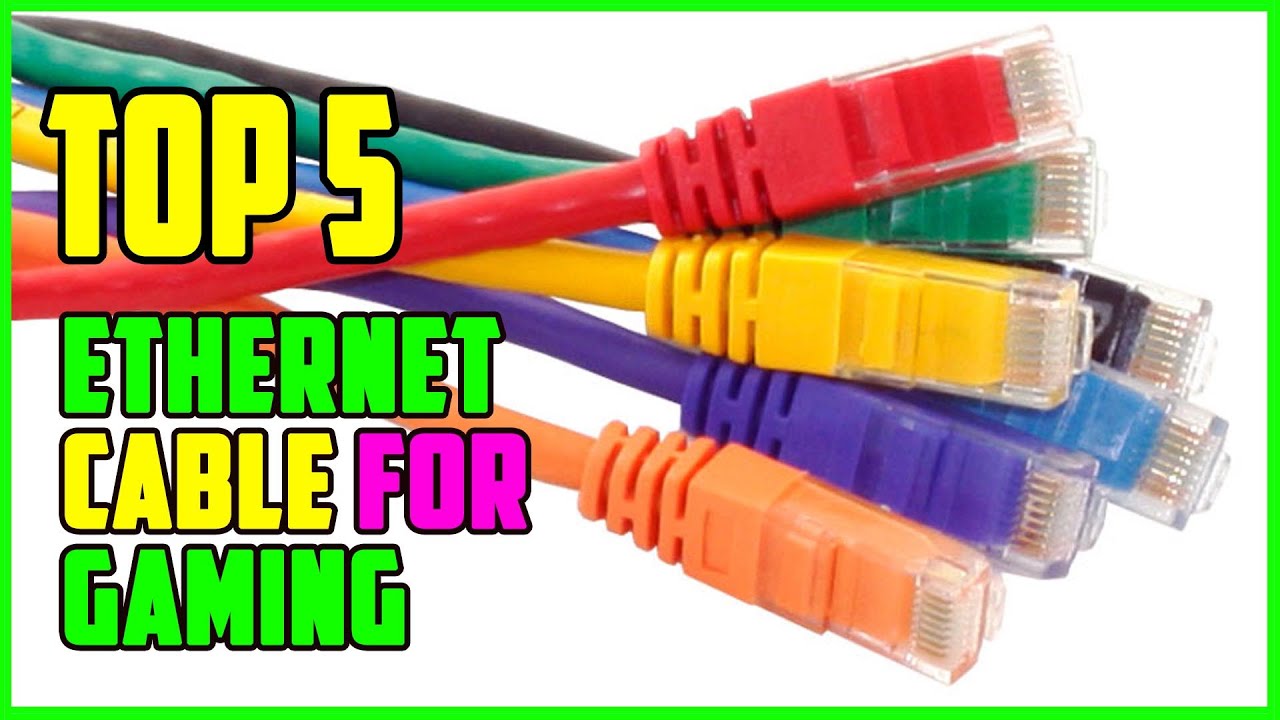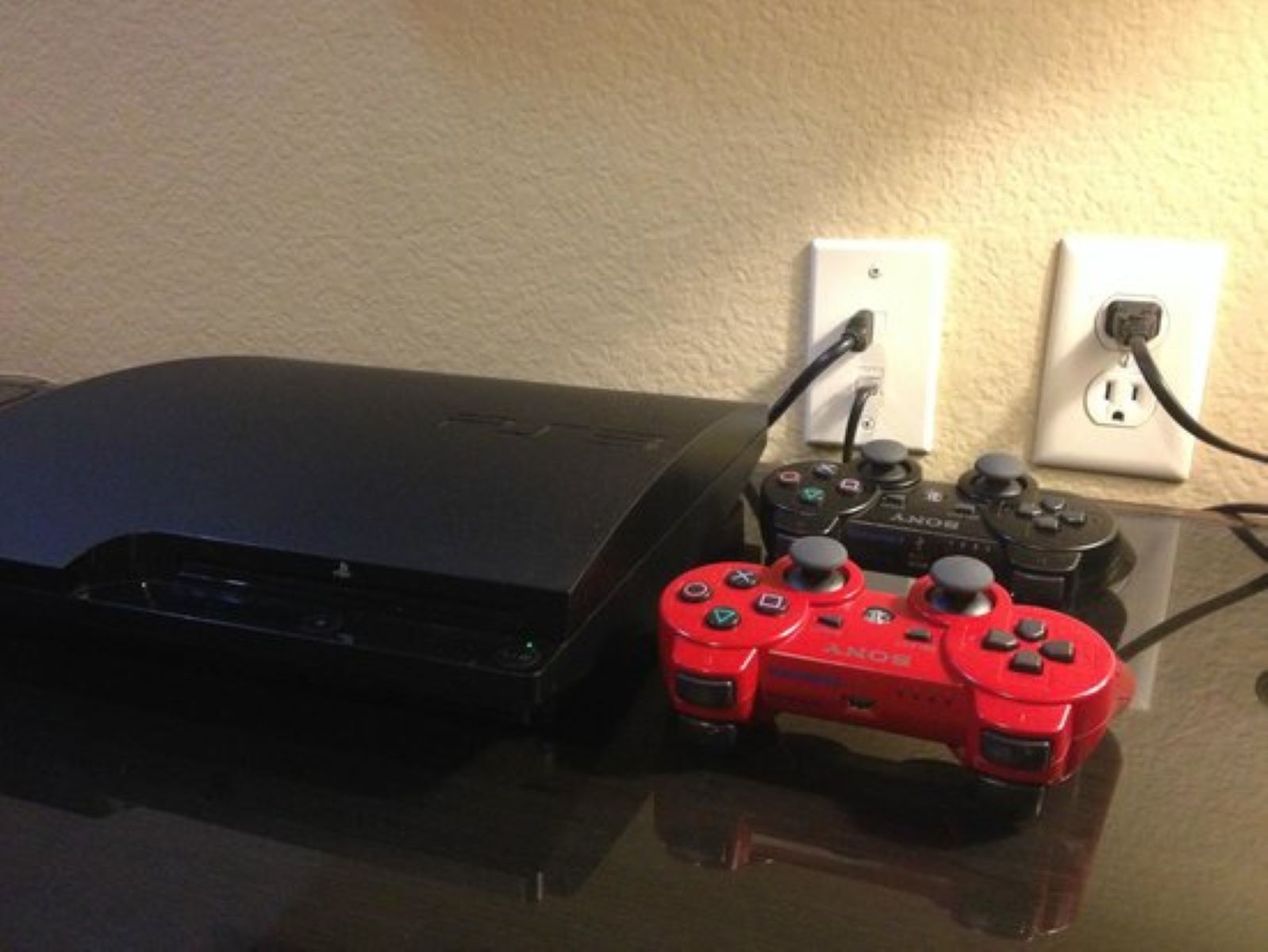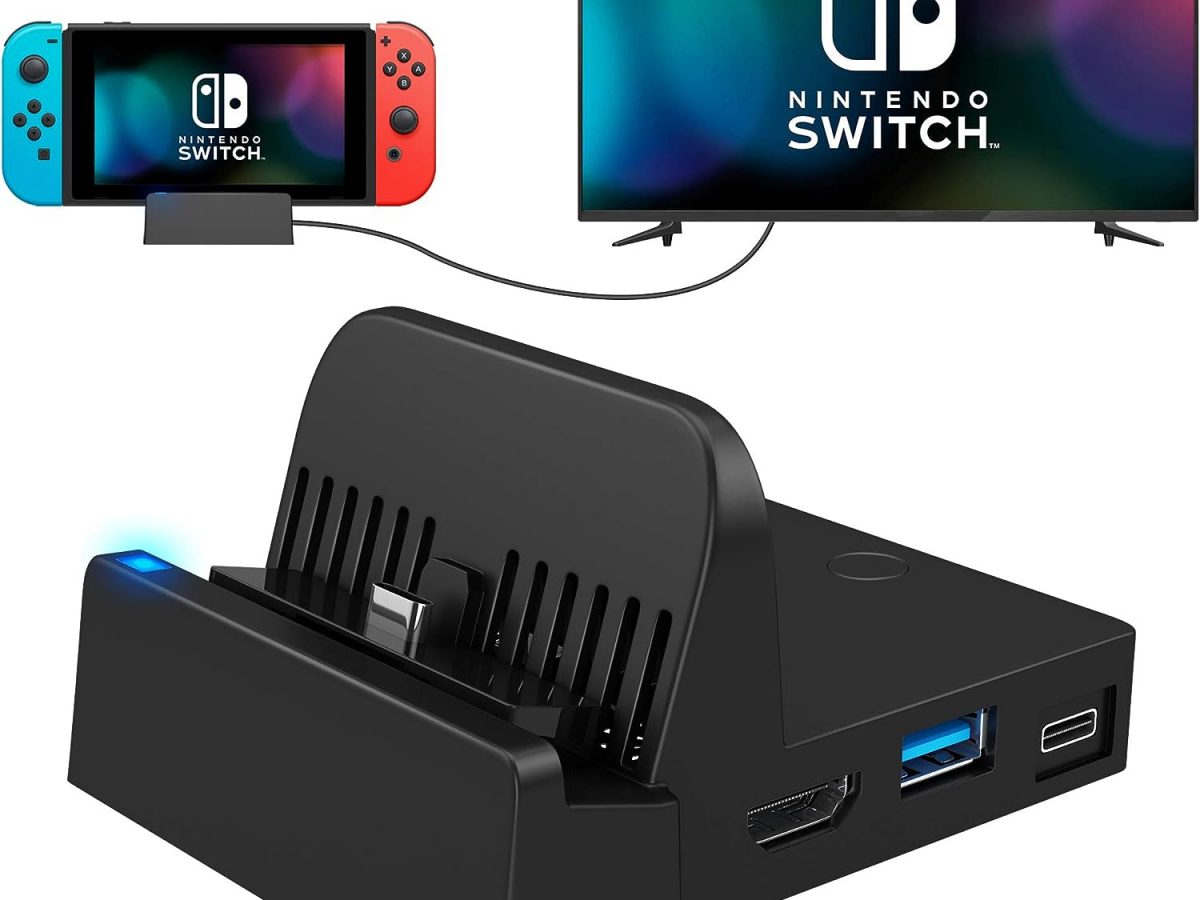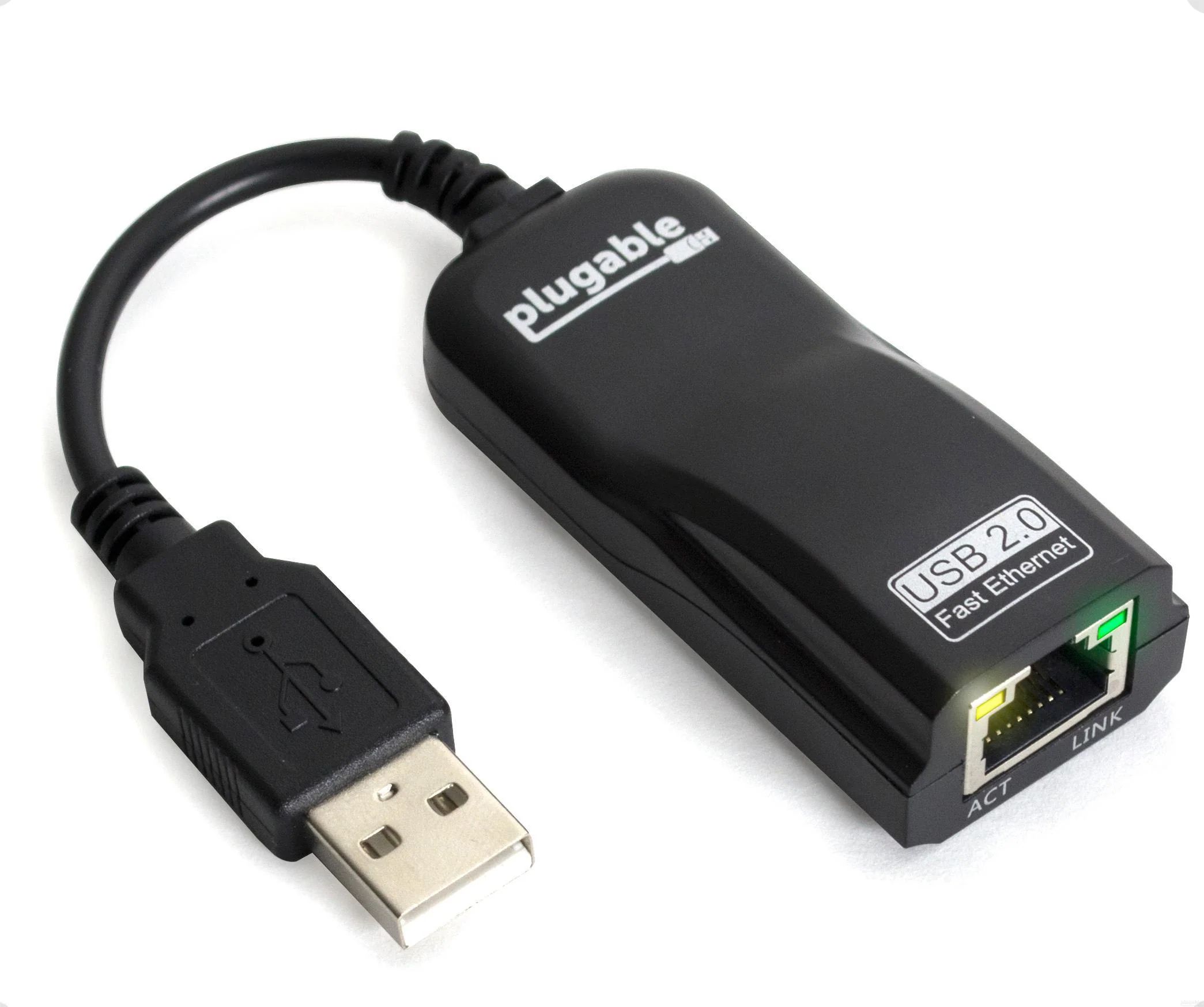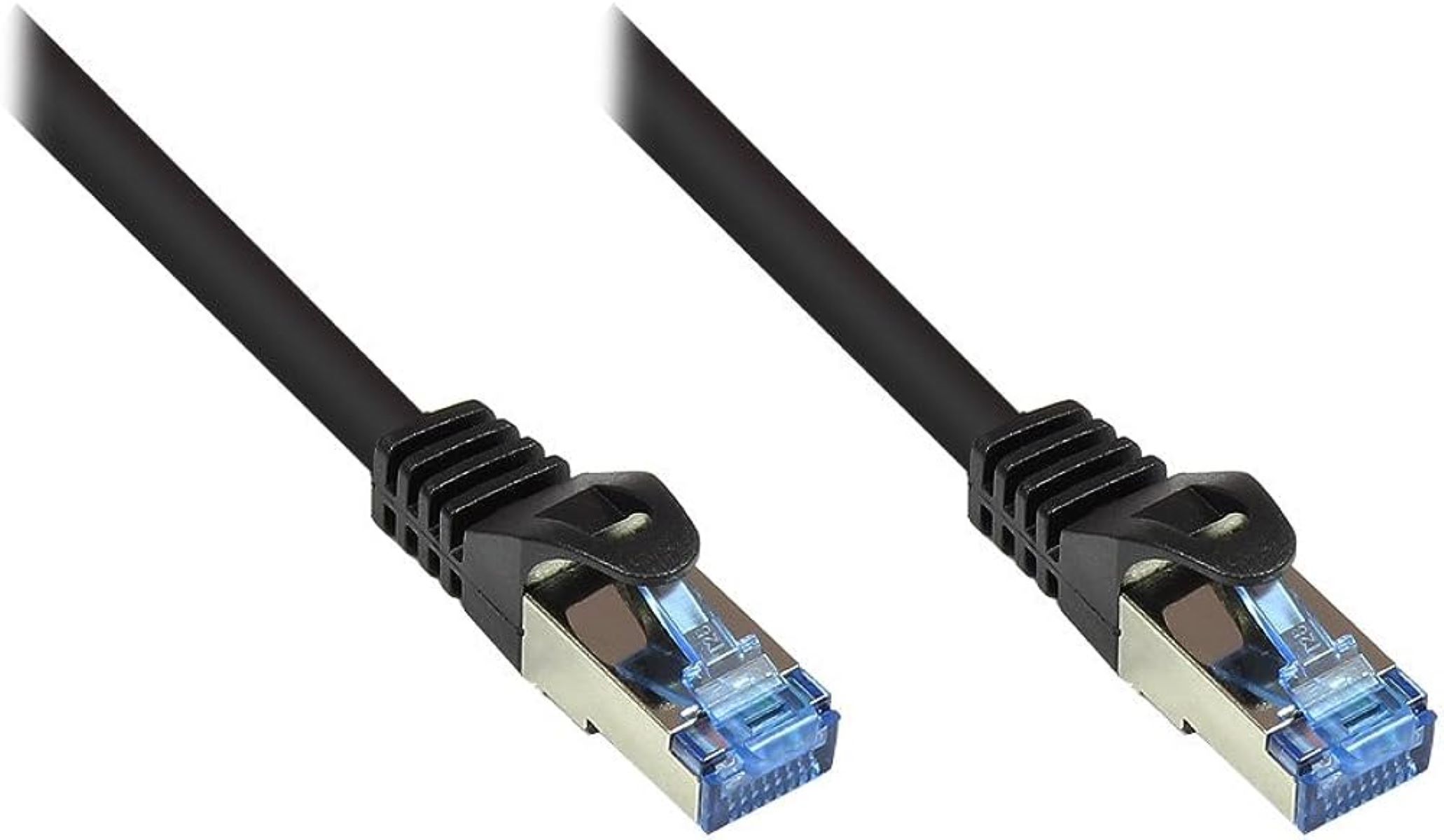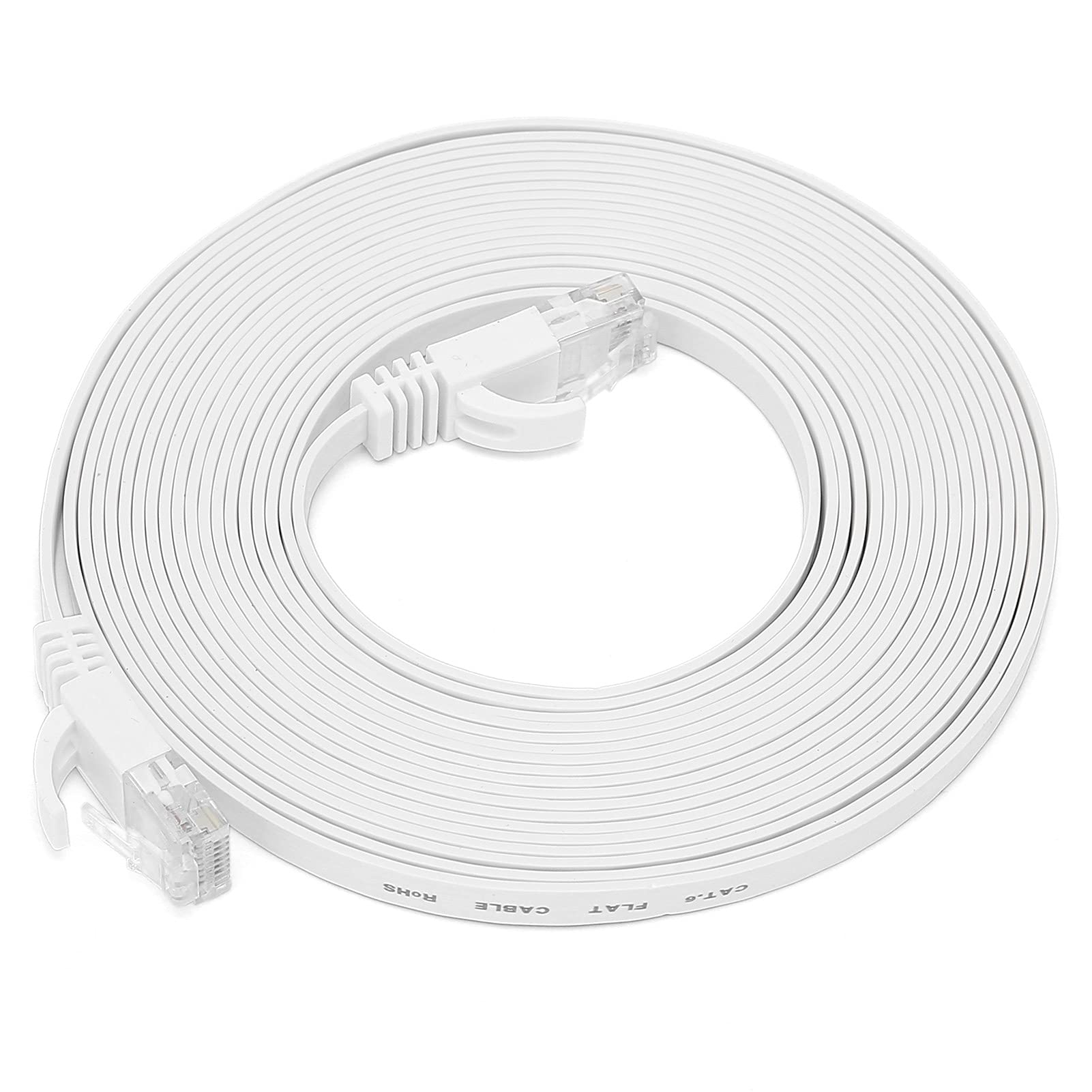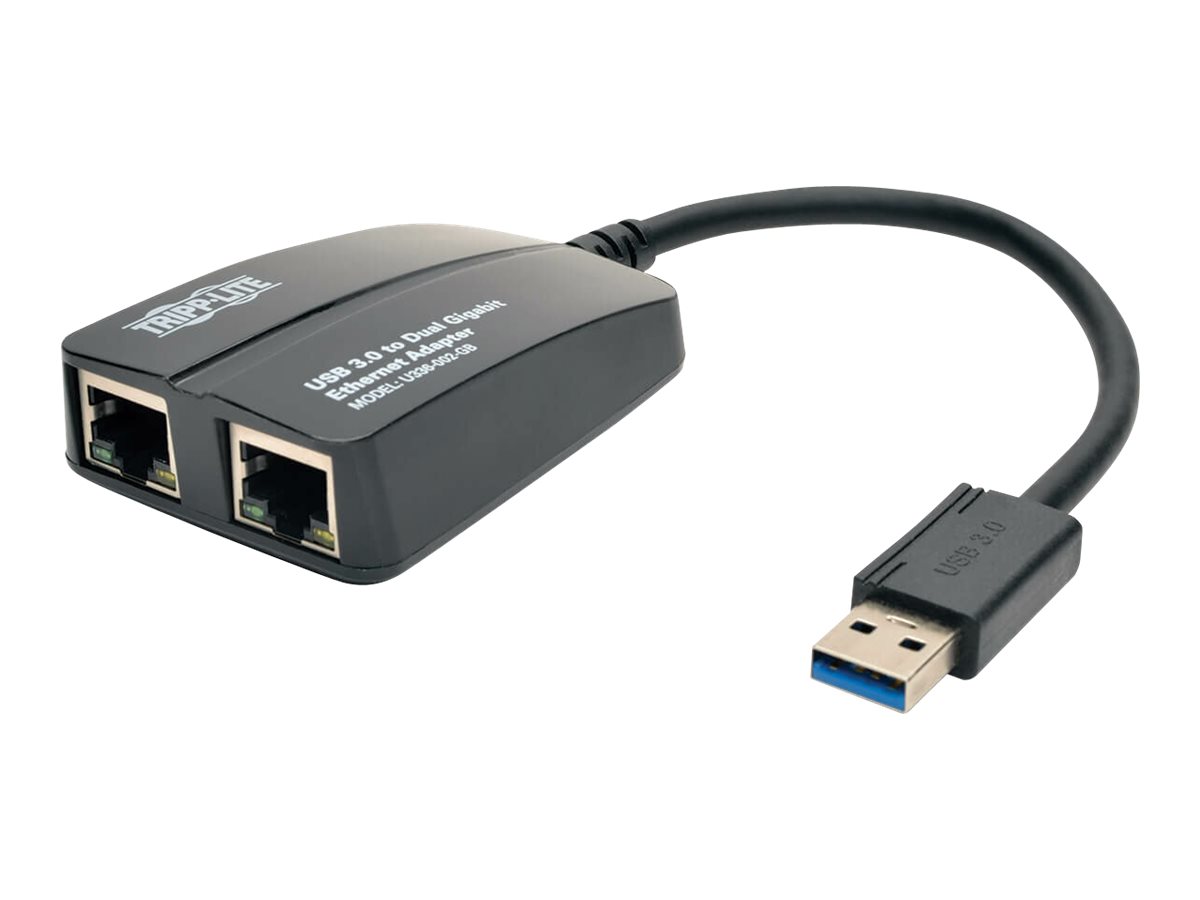Introduction
Welcome to the exciting world of online gaming! Whether you’re a casual gamer or a dedicated player, having a reliable and fast internet connection is essential for an immersive gaming experience. While Wi-Fi may be convenient, it can often be prone to latency and interference, leading to frustrating lag and dropped connections.
That’s where Ethernet comes in. By using an Ethernet cable to connect your gaming device directly to your router, you can enjoy a stable and high-speed connection that ensures minimal lag and maximum performance. In this article, we will guide you through the process of setting up and optimizing your Ethernet connection for online gaming.
Before we dive into the technical details, it’s important to understand that Ethernet cables come in various categories, such as Cat 5e, Cat 6, and Cat 7, each offering different speeds and capabilities. Choosing the right cable for your gaming needs is crucial, as it can significantly impact your overall gaming experience.
Once you have selected the appropriate Ethernet cable, you will need to set up your connection correctly. This involves physically connecting the cable to your gaming device and router, as well as configuring your network settings to ensure seamless communication between your device and the gaming server.
We understand that troubleshooting network issues can be frustrating, so we’ll walk you through common issues that may arise and provide tips to resolve them. Additionally, we’ll share some optimization techniques to help you get the most out of your Ethernet connection, ensuring maximum speed and stability.
By the end of this article, you’ll be equipped with all the knowledge and tools necessary to enjoy lag-free online gaming. So, let’s get started!
Choosing the Right Ethernet Cable
When it comes to online gaming, the type of Ethernet cable you choose can have a significant impact on your gaming experience. Different categories of Ethernet cables offer varying speeds and capabilities, so it’s important to select the one that best suits your needs.
The most common Ethernet cable categories are Cat 5e, Cat 6, and Cat 7. Cat 5e cables are the most basic and affordable option. They support speeds up to 1 Gbps and are suitable for casual gamers or those on a budget. However, if you’re looking for faster speeds, it’s best to opt for Cat 6 or Cat 7 cables.
Cat 6 cables are an upgrade from Cat 5e and provide improved performance. They are capable of supporting speeds up to 10 Gbps and have better shielding to reduce interference. This makes them ideal for gamers who require a higher bandwidth for online gaming, streaming, or downloading large game files.
If you’re a serious gamer or want the absolute best performance, Cat 7 cables are the way to go. With even faster speeds of up to 40 Gbps, Cat 7 cables are designed for ultra-fast gaming and data transfer. They also feature advanced shielding to minimize crosstalk and external interference, ensuring a reliable and stable connection.
When choosing an Ethernet cable, it’s important to consider the length as well. While longer cables may be required to reach your gaming device, keep in mind that longer cables can result in signal degradation. It’s best to choose the shortest cable that will reach your device to minimize any potential loss in signal quality.
Lastly, always ensure that the cable you purchase is certified by the Ethernet Alliance or a reputable manufacturer. This will guarantee that the cable meets industry standards and is of high quality.
By selecting the right Ethernet cable for your gaming needs, you can ensure a smooth and uninterrupted gaming experience. So, take the time to evaluate your requirements and make an informed decision. Up next, we’ll guide you through the process of setting up your Ethernet connection for optimal performance.
Setting Up Your Ethernet Connection
Now that you have chosen the appropriate Ethernet cable for your gaming needs, it’s time to set up your connection. Setting up an Ethernet connection is relatively straightforward and can greatly enhance your online gaming experience. Follow these steps to get started:
- Locate your gaming device and router: Find the Ethernet ports on both your gaming device (e.g., PC, gaming console) and your router. The Ethernet ports are usually labeled and are similar in appearance.
- Connect the Ethernet cable: Take one end of the Ethernet cable and insert it into the Ethernet port on your gaming device. Ensure a secure connection. Then, take the other end of the cable and plug it into an Ethernet port on your router.
- Power on your devices: Turn on your gaming device and router. Wait for them to fully power up and establish a connection.
- Test your connection: Once both devices are powered on, test your connection by launching an online game or performing a network speed test. This will help you verify that the Ethernet connection is properly set up and functioning correctly.
If everything is working smoothly, congratulations! You’ve successfully set up your Ethernet connection. Your gaming device should now be connected to the internet via a wired and stable connection, minimizing the possibility of lag or interruptions during gameplay.
However, if you’re experiencing any issues with the Ethernet connection, make sure to check the following:
- Ensure that the Ethernet cable is securely connected to both your gaming device and the router.
- Check if the Ethernet port on your gaming device or router is damaged. If so, you may need to replace the device or utilize a different Ethernet port.
- Verify that the Ethernet cable you’re using is in good condition and not frayed or damaged. A faulty cable can affect the quality of your connection.
- Double-check your network settings to ensure they are properly configured, which we will discuss in detail in the next section.
By following these steps and troubleshooting any potential issues, you can ensure a successful Ethernet connection setup. In the next section, we’ll walk you through the process of configuring your network settings to optimize your gaming experience.
Configuring Your Network Settings
Once you have set up your Ethernet connection, it is important to configure your network settings to ensure optimal performance for online gaming. Follow these steps to optimize your network settings:
- Access your router settings: Open a web browser on your computer and enter the IP address of your router. The IP address is typically found on the back of your router or in the user manual. Enter the login credentials to access the router settings.
- Enable Quality of Service (QoS): Look for the QoS settings in your router settings. QoS allows you to prioritize your gaming traffic, ensuring a smoother and more stable connection. Enable QoS and set the priority level for your gaming device.
- Disable unnecessary features: Some routers may have additional features, such as firewall settings or parental controls, that can impact your gaming performance. Disable these features if you do not require them to reduce any potential interference.
- Change the DNS settings: Consider changing your Domain Name System (DNS) settings to a faster and more reliable DNS server. Services like Google DNS or OpenDNS can help improve your internet connection speed and reduce any latency during gaming sessions.
- Update firmware: Check if there are any firmware updates available for your router. Keeping your router’s firmware up to date can enhance performance, stability, and security.
- Restart your router: After making any changes to your network settings, restart your router to ensure the changes take effect.
Once you have configured your network settings, perform a speed test to check if your connection is optimized for gaming. There are various online speed test tools available that can help you measure your download and upload speeds, as well as the overall stability of your connection.
If you notice any issues or experience lag during gameplay, consider tweaking the settings further or contacting your internet service provider for assistance. They may be able to provide specific recommendations or troubleshoot any issues that may be affecting your connection.
By configuring your network settings to prioritize your gaming traffic and optimize your connection, you can enjoy a smoother and more responsive gaming experience. In the next section, we will discuss common issues that may arise and provide troubleshooting tips to help you overcome them.
Troubleshooting Common Issues
While setting up and configuring your Ethernet connection, you may encounter certain issues that can affect your online gaming experience. Here are some common problems and troubleshooting tips to help you resolve them:
- Slow or unstable connection: If you’re experiencing a slow or unstable connection, first check your internet speed using a speed test tool. If the speed is significantly lower than expected, contact your internet service provider to address any potential network issues. Additionally, ensure that your Ethernet cable is not damaged and that it is securely connected to your gaming device and router.
- High latency or lag: Lag can be frustrating during gaming sessions. To reduce latency, check your network settings and enable QoS (Quality of Service) to prioritize your gaming traffic. Closing bandwidth-intensive applications or devices that are not necessary for gaming can also help reduce lag. Additionally, try connecting your gaming device directly to your router using an Ethernet cable instead of relying on Wi-Fi, as Wi-Fi connections can be more prone to latency and interference.
- Interference from other devices: If you notice intermittent connection drops or performance issues, consider whether other devices or appliances in your home could be interfering with your Ethernet connection. Electrical devices like microwaves, cordless phones, or baby monitors can all cause interference. Try to place your gaming setup away from such devices or use shielded Ethernet cables to minimize interference.
- Network configuration issues: Double-check your network settings to ensure they are correctly configured. Verify that you have assigned a static IP address to your gaming device, as this can help with consistency and prevent IP conflicts. Also, ensure that no other devices on your network are hogging bandwidth, and consider limiting background downloads or uploads during gaming sessions.
If you continue to experience issues despite troubleshooting, it may be beneficial to consult with technical support from your internet service provider or seek advice from online gaming communities and forums. They can provide further guidance specific to your situation and help diagnose any underlying issues.
Remember, troubleshooting network issues can require some trial and error. Be patient, and don’t hesitate to reach out for assistance if needed. By addressing common issues and optimizing your Ethernet connection, you’ll be on your way to enjoying a seamless and lag-free online gaming experience.
Optimizing Your Ethernet Connection
To further enhance your online gaming experience, there are several ways you can optimize your Ethernet connection:
- Upgrade your hardware: If you’re using an older router or modem, consider upgrading to a newer model that supports higher bandwidth and faster speeds. This can significantly improve your connection quality and reduce latency.
- Use a wired connection: While Wi-Fi may offer convenience, a wired Ethernet connection is generally more stable and reliable for gaming. Connect your gaming device directly to the router using an Ethernet cable to minimize interference and eliminate potential signal loss.
- Position your router strategically: Place your router in a centralized location within your home to ensure an optimal signal distribution. Avoid placing it near obstructions or objects that can interfere with the wireless signal, such as walls, large appliances, or metal objects.
- Reduce network congestion: If you’re sharing your internet connection with multiple devices or users, network congestion can impact your gaming performance. Limit the number of devices using the network simultaneously, close bandwidth-intensive applications, or consider implementing Quality of Service (QoS) settings to prioritize gaming traffic.
- Utilize Ethernet over Powerline adapters: If your gaming device is located far away from your router, Ethernet over Powerline adapters can be a viable solution. These adapters use existing electrical wiring to transmit Ethernet signals, allowing you to connect your device to the router through the power outlets in your home.
- Regularly update your firmware: Manufacturers often release firmware updates for routers and network equipment to improve performance, security, and stability. Check for firmware updates regularly and apply them as recommended by the manufacturer.
Experiment with these optimization techniques to find the best combination that works for your specific setup and gaming requirements. Keep in mind that Internet Service Providers (ISPs) may have specific restrictions or limitations that can impact your overall connection quality. If you’ve tried various optimizations and still experience issues, consider discussing the matter with your ISP for further assistance.
By implementing these optimization methods, you can ensure a smooth and lag-free gaming experience, providing you with an edge in competitive online gaming and a more immersive gameplay session. Now that you’re armed with these optimization techniques, let’s dive into the world of lag-free online gaming!
Enjoying Lag-Free Online Gaming
With your Ethernet connection set up and optimized, it’s time to dive into the world of lag-free online gaming. By following these tips, you can ensure a smooth and immersive gaming experience:
- Select gaming servers wisely: When playing online multiplayer games, choose servers that are closest to your geographical location. This reduces the distance between your gaming device and the server, resulting in lower latency and better overall performance.
- Maintain a clutter-free gaming setup: Clear your gaming area of any unnecessary items that may interfere with your connection or cause distractions. This includes removing obstacles between your gaming device and the router, as well as minimizing dust near your equipment to prevent overheating.
- Optimize in-game settings: Each game has its own graphics and network settings that can impact performance. Adjust the settings based on your hardware capabilities to achieve the best balance between graphics quality and smooth gameplay.
- Stay updated: Keep your gaming device’s drivers, firmware, and game software up to date. Regular updates often include performance enhancements and bug fixes that can improve gameplay and eliminate potential issues.
- Invest in quality peripherals: A high-quality gaming mouse and keyboard can provide better responsiveness and enhance your overall gaming experience. Consider investing in peripherals that are designed specifically for gamers.
- Manage background processes: Close any unnecessary applications running in the background, as they can consume bandwidth and system resources, potentially leading to increased latency and reduced performance during gameplay.
- Monitor your internet usage: Keep an eye on your data usage and consider upgrading your internet plan if you frequently experience bandwidth limitations or slow speeds. Higher upload and download speeds can help prevent congestion during gaming sessions.
- Join gaming communities: Engage with other gamers in online communities or forums to exchange experiences, tips, and recommendations. They can provide valuable insights and suggestions for optimizing your gaming setup.
Remember, achieving a truly lag-free gaming experience requires a combination of a stable Ethernet connection, optimized settings, and a well-maintained gaming setup. Regularly evaluate and fine-tune your setup to ensure you’re getting the best performance possible.
By implementing these strategies and being proactive about maintaining your gaming environment, you can enjoy hours of lag-free gameplay, immerse yourself in virtual worlds, and compete with confidence. So, gear up and get ready to conquer your favorite games!
Conclusion
Congratulations! You have now learned how to set up, configure, and optimize your Ethernet connection for lag-free online gaming. By using a wired connection, choosing the right Ethernet cable, and fine-tuning your network settings, you can ensure a seamless and immersive gaming experience.
Remember to select the appropriate Ethernet cable based on your gaming needs, such as Cat 6 or Cat 7 cables for faster speeds. Setting up your Ethernet connection involves connecting the cable to your gaming device and router, while configuring network settings includes enabling QoS, updating firmware, and optimizing DNS settings.
If you encounter any issues, troubleshooting common problems like slow connections, high latency, or interference can help resolve them. Additionally, optimizing your Ethernet connection by upgrading hardware, minimizing network congestion, and utilizing Ethernet over Powerline adapters can further improve your gaming performance.
Once your Ethernet connection is optimized, you can enjoy lag-free online gaming by selecting appropriate gaming servers, maintaining a clutter-free setup, and optimizing in-game settings. Stay updated with driver and firmware updates, invest in quality peripherals, and manage background processes to enhance your gaming experience.
Remember to monitor your internet usage and consider upgrading your plan if necessary. Engaging with gaming communities and forums can provide valuable insights and recommendations for ongoing optimization.
Now armed with the knowledge and techniques to optimize your Ethernet connection, you’re ready to embark on your gaming adventures with seamless gameplay and an edge over your opponents. So, connect your Ethernet cable, power up your gaming device, and enjoy the thrill of lag-free online gaming!







